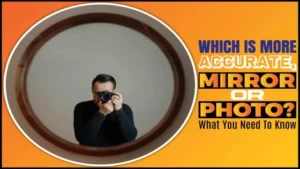“Best camera lens under $500” is the magic phrase for photography enthusiasts searching for superior image quality without breaking the bank. Recognize a good quality camera lens can transform your photography, elevating your shots from good to spectacular. Our goal is to guide you through the labyrinth of affordable lenses. Hence, we’ve curated an article to present you with the best lenses under the $500 mark.
Whether you’re a growing photographer or a seasoned pro looking for a budget-friendly upgrade, we’ve got you covered. Dive in to discover cost-effective lenses that maintain high image fidelity. Similarly, find lenses suitable for different shooting scenarios. Indeed, each lens mentioned boasts unique features to augment your photography, ensuring great value for money. So, let’s embark on this journey to uncover the best lenses that will power your photography without pinching your pocket.
Table of Contents
Understanding Camera Lenses:
“Understanding Camera Lenses” is the starting point for anyone seeking to venture into the vast world of photography. Firstly, a camera lens is your window to the world, influencing how your camera captures and interprets light.
Various lens types, namely Prime, Zoom, Wide-angle, Macro, and Telephoto, offer distinct views and applications. For instance, a Prime lens delivers a fixed view with excellent sharpness, while a Zoom lens provides a versatile range.
Wide-angle lenses excel in capturing expansive landscapes, whereas Macro lenses are perfect for minute details. Telephoto lenses, on the other hand, bring distant subjects closer. Crucially, consider vital factors like focal length, maximum aperture, image stabilization, and lens mount compatibility when purchasing a lens.
The focal length affects your frame. The aperture controls light intake, image stabilization combats motion blur, and the lens mount must be compatible with your camera. All in all, understanding lenses broadens your creative horizons.

Budget Lenses vs High-End Lenses:
“Budget Lenses vs High-End Lenses” is an essential guide to understanding the world of camera lenses. At first glance, it’s easy to believe the saying, “You get what you pay for.”
However, with the evolving landscape of photography, the lines between budget and high-end lenses have blurred. High-end lenses often bring the allure of superior construction, excellent image quality, faster maximum apertures, and more sophisticated lens elements.
On the other hand, budget lenses can offer a reliable, more affordable entry point into photography, making them popular for beginners or those on a strict budget.
Indeed, it’s sometimes about something other than the price tag. Rather, the ‘right’ lens depends on your needs and shooting style. So, let’s break it down. High-end lenses usually offer advanced features like better low-light performance, improved image stabilization, and quicker autofocusing.
They also exhibit fewer optical aberrations, providing sharper, more transparent images. Nevertheless, budget lenses can offer impressive performance, often delivering great value for money.
Engineers design many modern budget lenses to deliver high-quality images, thus challenging their high-end counterparts. Remember, a higher price tag only sometimes equates to better photos; skill and technique play a paramount role. Similarly, lens selection depends on several factors, like the genre of photography, lighting conditions, and your camera body. It’s important to balance your budget, requirements, and expectations.
While high-end lenses have their merits, budget lenses can also pack a punch, offering a worthwhile avenue for exploration and learning. Therefore, it’s crucial to understand both budget and high-end lenses to make an informed choice that best suits your photographic journey.

1. Sony SEL35F18 35mm f/1.8 Prime Fixed Lens: A Snapshot:
First off, let’s delve into what sets the Sony SEL35F18 35mm f/1.8 lens apart. At its core, it’s a compact, lightweight prime lens. Now, add an F1.8 aperture to the mix. This feature guarantees you brilliantly bright photos, even in low-light conditions. It sports an angle view of 44°, aptly tailored for APS-C format cameras.
Interestingly, this lens has a minimum focus distance of 0.99 ft. Coupled with its 0.15x magnification ratio, you can get close and capture detailed images. However, what truly sets it apart is its focal length of 1.38 in. Consequently, it’s equivalent to 52.5 mm in APS-C format, offering you a versatile focal length for various types of photography.
Next up, the lens’s optical design deserves attention. Skillfully crafted, it delivers sharp, contrast-rich images across the frame. Notably, it features built-in Optical SteadyShot image stabilization. Therefore, even handheld shots turn out impressively stable and blur-free.
Focusing is another area where this lens shines. Remarkably silent and smooth, it is ideal for video shooting. Further, you can easily switch to direct manual focus if autofocus struggles. However, remember that this lens is not zoomable. Hence, it may limit your options in certain shooting situations.
In summary, the Sony SEL35F18 35mm f/1.8 Prime Fixed Lens is a great option for its price range. Its unique blend of features and performance offers a lot for photography enthusiasts and professionals alike. Despite its limitations in zoom capabilities, it more than compensates with its superior optical quality and focusing prowess.
2.Sigma 16mm f/1.4 DC DN Contemporary Lens: A Closer Look:
The Sigma 16mm f/1.4 DC DN lens offers a notable combination of performance and versatility. It’s a wide-angle lens, perfect for Sony E-mount cameras. Specifically, this lens shines in nature and event photography, where wide frames often create more engaging photos.
Importantly, it has a large f/1.4 aperture. It guarantees superior low-light performance, allowing you to capture bright images even in dim situations. Also, its 16mm focal length provides a wide field of view, bringing more of your scene into the frame.
The lens has a compact size, enhancing its portability. Therefore, whether you’re hiking or at a busy event, it won’t weigh you down. However, due to its wide-angle nature, it might only be ideal for some types of photography. Portraits, for instance, could appear distorted or exaggerated.
Regarding focusing, this Sigma lens fully accommodates Fast Hybrid AF. As a result, you can enjoy quick, precise autofocusing for both stills and video. Nonetheless, bear in mind that the lens has no image stabilization. Thus, you might need to employ a tripod for long exposures or video work.
To summarise, the Sigma 16mm f/1.4 DC DN Contemporary Lens is a great wide-angle option for Sony E-mount users. It combines a large aperture and a wide field of view in a compact, portable design. Despite minor shortcomings like the lack of image stabilization, its low-light and wide-angle photography advantages make it a noteworthy contender.
3.A Detailed Review of the Fujifilm XF23mmF2 R WR - Black:
Diving into the realm of Fujifilm, the XF23mmF2 R WR lens makes quite an impression. It comes with an advanced image quality system featuring ten elements in six groups. Remarkably, two of these elements are aspherical, providing superior edge-to-edge sharpness. This alone makes it a solid choice for those keen on detail.
It has a decent angle of view at 63.4°, promising a broad field for your shots. Weighing in at just 180g, it proves compact and lightweight. The stylish design further enhances its appeal, making it a great accessory to your Fujifilm X-Pro2 or X-T2 cameras.
An additional feature that adds value is its weather and dust resistance. It even operates well in cold temperatures, as low as -10 degrees. As such, it’s a dependable companion for outdoor photography in diverse climates. Nonetheless, its maximum magnification is a moderate 0.13x, which could limit close-up shots.
Now, let’s talk about autofocus. Its fast and silent autofocus system is impressive. Especially when paired with the phase detection AF system of certain Fujifilm cameras, it can focus in an astonishing 0.05 seconds. However, this rapid focus might not be as effective with other camera models.
All in all, the Fujifilm XF23mmF2 R WR – Black is a high-performing, resilient lens that offers a lot of benefits. Despite its limited magnification and potential autofocus constraints with some cameras, its overall features, such as excellent image quality and compact design, make it a strong contender in its category.
4.Unveiling the Canon RF24-105mm F4-7.1 IS STM Lens:
Stepping into the Canon lens line-up, the RF24-105mm F4-7.1 IS STM stands out for its blend of quality and versatility. It’s compact, lightweight, and has a 24-105mm zoom range. These features make it suitable for various photography styles, from landscapes to portraits.
Impressively, it features Optical Image Stabilization. This provides up to 5 stops of shake correction, ensuring sharp images even in handheld shooting. However, its variable aperture of F4-7.1 might limit its performance in low-light conditions.
Another notable feature is its magnification and focusing capabilities. In autofocus, it can achieve a maximum magnification of 0.4x and a minimum focusing distance of 0.66 ft. Additionally, when using Center Focus Macro, these figures improve to a 0.5x magnification and 0.43 ft. minimum focusing distance. Despite not being a dedicated macro lens, these features make it a capable lens for close-up shots.
Its relatively small maximum aperture is a possible downside, especially at the telephoto end. This might limit the lens’s ability to create a shallow depth of field compared to lenses with larger apertures.
In conclusion, the Canon RF24-105mm F4-7.1 IS STM is a compact, high-quality lens with a versatile zoom range. Its image stabilization and close-up capabilities are impressive. Although its maximum aperture may not be the largest, its overall features and performance make it a strong contender for a variety of photographic needs.
5.SIRUI 75mm Anamorphic Lens F1.8 1.33X APS-C (MFT Mount): The Cinematic Eye
Let’s take a closer look at the SIRUI 75mm Anamorphic lens, a game-changer for independent filmmakers and photography enthusiasts. Uniquely, this lens offers a 1.33x squeeze factor, transforming your regular frames into wider, 2.4:1 cinematic videos without any need for post-cropping.
The lens has an aperture field from f/1.8 to f/16, offering excellent control over field depth. Furthermore, it creates cinematic effects such as horizontal sci-fi reflections and oval bokeh. However, these stylized effects might not be suitable for all types of photography or videography.
The build quality is robust yet lightweight, owing to its aviation aluminium alloy body and Germany-made Schott glass elements. Its construction includes 16 glass elements in 12 groups, contributing to its advanced optical performance. However, its manual focus may require some practice and may need to be better for quick action shots.
Its closest focusing distance ranges from 1.2m to infinity, providing a considerable range for various shooting scenarios. The maximum magnification is 1:14.47 (V), 1:18.45 (H), not the highest, but fair for a lens of its kind. Also, it has a large 191° focus ring rotation angle, facilitating precise focusing.
The lens is lengthy at 130.4mm without the lid and weighs approximately 800g. For some, this might be slightly heavier than expected, potentially affecting portability. Nevertheless, its unique cinematic effects and robust design more than makeup for any minor shortcomings.
The SIRUI 75mm Anamorphic Lens F1.8 1.33X APS-C (MFT Mount) is a splendid choice for those seeking to add cinematic flavour to their works. Despite its manual focus and specific stylistic effects, its anamorphic qualities, robust construction, and wide aperture range make it a standout lens.
Choosing the Best Camera Lens Under $500 Final Thoughts:
In the under $500 price range, a variety of exceptional lenses offer impressive features. For instance, the Sony SEL35F18 35mm f/1.8 offers great sharpness and image stabilization, while the Sigma 16mm f/1.4 DC DN Contemporary lens excels in nature and event photography.
The Fujifilm XF23mmF2 R WR also offers advanced image quality and weather resistance, and the Canon RF24-105mm F4-7.1 IS STM provides a versatile zoom range. Lastly, the SIRUI 75mm Anamorphic Lens F1.8 delivers unique cinematic effects.
Each of these lenses has strengths that cater to specific photography needs. Thus, your choice depends on your particular requirements. However, the Canon RF24-105mm F4-7.1 IS STM stands out for its versatile zoom range and image stabilization, making it an all-around excellent choice. Remember, the best lens is the one that fits your photography style and needs.
Frequently Asked Questions
The Sony SEL35F18 35mm f/1.8 lens offers excellent peripheral sharpness, built-in image stabilization, and smooth high-speed focusing. It’s great for shooting high-quality stills and videos.
The Sigma 16mm f/1.4 DC DN lens has a large f/1.4 aperture, providing superb low-light performance. Moreover, it is wide-angle and compact in size, making it ideal for capturing wide landscapes and events.
Thanks to its weather and dust resistance, the Fujifilm XF23mmF2 R WR operates well even at temperatures as low as -10 degrees, making it perfect for outdoor photography in various climates.
The Canon RF24-105mm F4-7.1 IS STM lens offers a versatile zoom range and Optical Image Stabilization of up to 5 stops, ensuring sharp images even in handheld shooting.
The SIRUI 75mm Anamorphic Lens F1.8 provides a 1.33x squeeze factor, creating wider, full HD 2.4:1 cinematic videos. It also generates unique effects like horizontal sci-fi reflections and oval bokeh.
Consider your specific needs, such as preferred photography style, low-light performance, desire for image stabilization, and requirement for weather resistance. Then, match these to the features of the lens.






